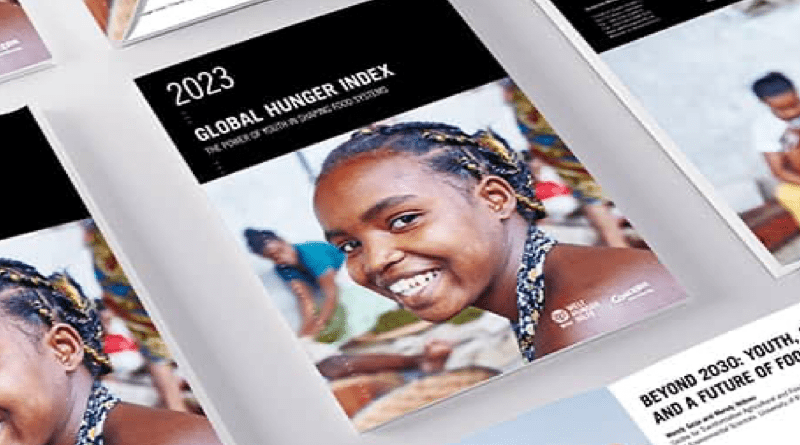India Rejects Global Hunger Index 2023 After Ranking 111th Out Of 125: Government Says ‘Flawed And Erroneous’ – Analysis
Global Hunger Index-2023
In the 2023 Global Hunger Index, India’s ranking at 111 out of 125 countries has drawn criticism from the Indian government, which characterises the report as erroneous and has malafide intent. Neighbouring countries, including Pakistan (102nd), Bangladesh (81st), Nepal (69th), and Sri Lanka (60th), have fared better in the index. Notably, in the 2022 Global Hunger Index, India was positioned at 107th out of 121 countries.
The report reveals that India has the world’s highest child-wasting (weight-for-age) rate, standing at 18.7%, and a child stunting (height-for-age) rate of 35.5%, ranking 15th highest, indicating severe undernutrition. But these figures are drawn from the National Family Health Survey (NFHS-5) 2019-21 data. With a score of 28.7, India’s hunger level is classified as ‘serious.’ According to the index, India’s undernourishment rate is 16.6%, and the under-five mortality rate is 3.1%. The report also highlights a high prevalence of anaemia in women aged 15 to 24, at 58.1%.
Indian government called it “erroneous”
The Indian government, however, has refuted the index’s findings, labelling it a flawed measure of ‘hunger’ that fails to accurately represent India’s true status. The Ministry of Women and Child Development contends that the index is plagued by ‘serious methodological issues and shows a malafide intent.’ The ministry argues, “Three out of the four indicators used for the calculation of the index are related to the health of children and cannot be representative of the entire population.’ Furthermore, it challenges the ‘Proportion of Undernourished (PoU) Population’ based on an opinion poll conducted on a very small sample size of 3000”. The use of these small sample size and dependence on a constrained set of questions introduces biases that overlook the intricate details of India’s food situation.
The government also expresses surprise that the index overlooks initiatives like the distribution of free food grains, mid-day meal programmes, and Mission Poshan, which are specifically aimed at addressing malnutrition. The government reports for the effectiveness of these efforts, monitored by the ‘Poshan Tracker’ app, which has received recognition from international organisations. Citing Mission Poshan and the ‘Poshan Tracker,’ the government reports that 14 lakh Anganwadi centres are registered on the app, benefiting over 10 crore beneficiaries, including pregnant women, lactating mothers, children under 6 years, and adolescent girls.
The ministry underscores that renowned global organisations like UNICEF, WHO, and the World Bank have acknowledged the Poshan Tracker as a transformative tool in the field of nutrition. The government asserts, ‘The percentage of child wasting, as seen on the Poshan Tracker, has been below 7.1% as of April 2023, month-on-month, as compared to the value of 18.7% used for child wasting in the Global Hunger Index 2023.’ Additionally, the government points out that the data on children under five uploaded to the Poshan Tracker has consistently increased since April 2023, rising from 6.34 crore in April 2023 to 7.24 crore in September 2023.
Furthermore, the government questions whether there is substantial evidence to link the fourth indicator, child mortality, to hunger. The ministry further contends that two of the index’s indicators, stunting and wasting, are influenced by complex interactions of various factors, such as sanitation, genetics, environment, and food intake utilization, in addition to hunger, which is merely considered the causative or outcome factor for stunting and wasting. In India focused on privileged children residing in Southern India, mainly from the Punjabi community. Their average height was notably around five inches greater than the average height observed in Nagaland. Genetics play a dominant role, accounting for 80% of the determination of an individual’s height and weight, while nutrition and the environment contribute the remaining 20%. This variation in height and weight is noticeable not just across different nations but also within the diverse regions of India.
However, it is essential to recognise that, despite substantial advancements, there are areas within the nation where hunger persists, and children endure malnutrition. Several programmes intended to combat hunger and malnutrition have failed to reach a substantial portion of the populace. On occasion, the existence of pervasive hunger and malnutrition is followed by government data, including results from the National Health Family Survey, revealing elevated rates of anaemia and insufficient dietary intake in diverse demographic groups. The challenge lies in identifying these specific regions and swiftly implementing measures to tackle hunger and malnutrition in all their forms.
Policy Recommendations
These recommendations were suggested by the GHI report. The Government of India might follow these recommendations for the interest of youth in shaping their future as well as their rights. Generational and gender justice must underpin equitable, sustainable, and resilient food systems that fulfil the right to adequate food for current and future generations.
- Put the right to food for all at the heart of food system transformation.
- Invest in young people’s capacities to be leaders in food system transformation.
- Invest in sustainable, equitable, and resilient food systems to ensure they offer viable and attractive livelihoods to young people.

